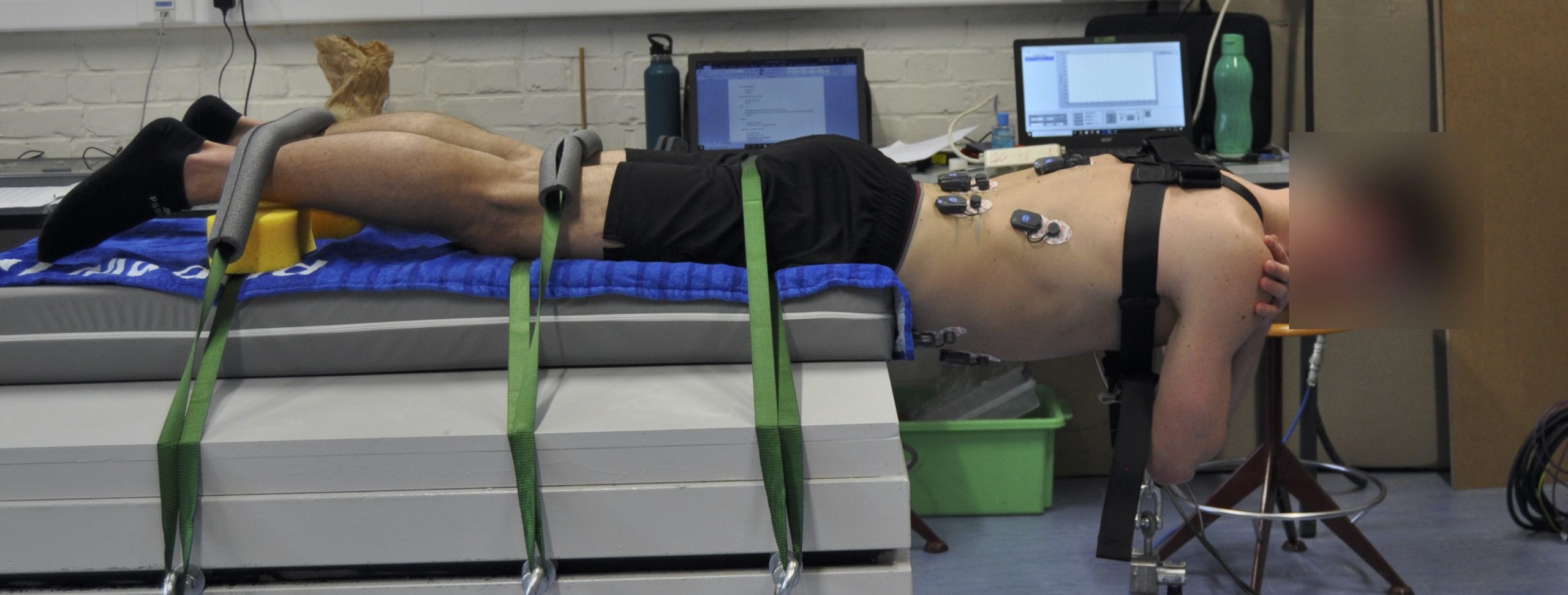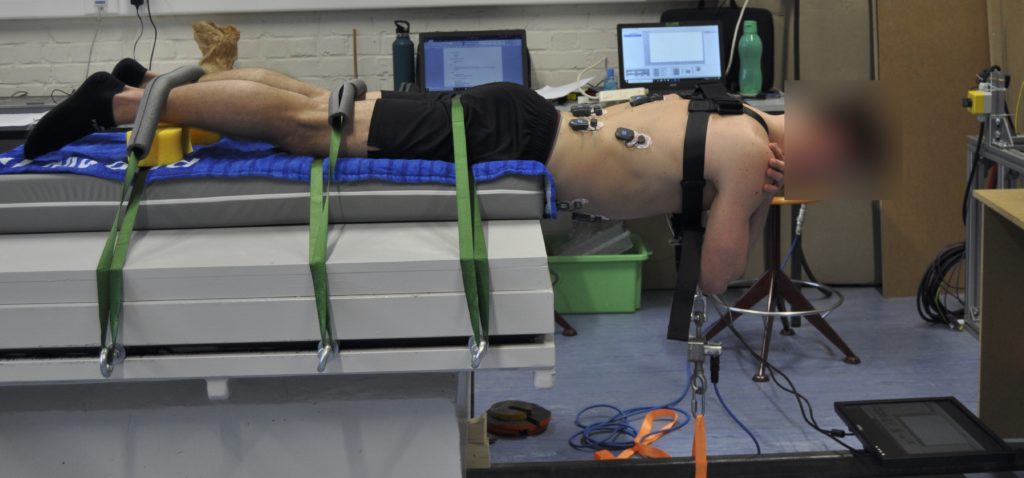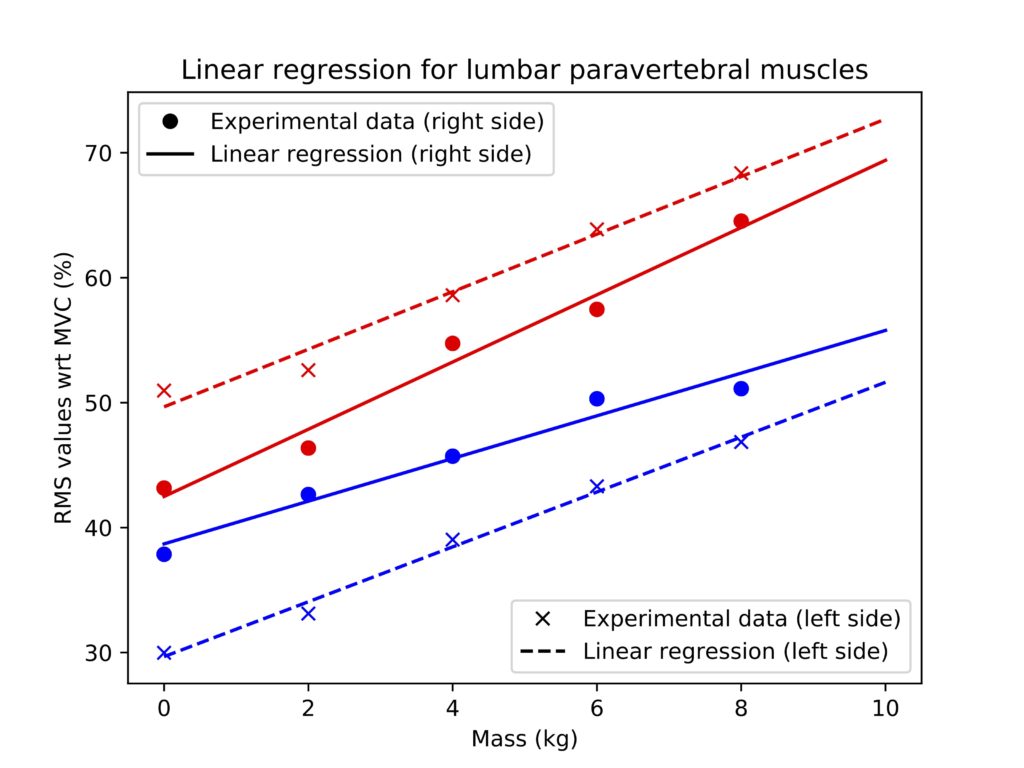
Abstract:
This project aims to quantify forces developed by abdominal and back muscles in various movements. The originality of the project stays in the development of a hybrid approach to quantify muscle forces. The hybrid method is obtained by combining non-invasive electromyography (EMG) measurements and multibody musculoskeletal models.
Keywords: Spine; Muscles; Surface electromyography; EMG-force relationship
In the human body, assessing muscle forces can be done using either experimental or mathematical approaches. The former often relies on the use of surface electromyography (EMG) measurements. However, they are indirect measurements of the force and their signal needs to be treated. Other existing experimental approaches are in vitro measurements or implants but they are much more invasive. Finally, experimental approaches have a limited scope as some muscles are not accessible and the number of subjects is often low. On the opposite, mathematical approaches allowed to develop generic musculoskeletal models embracing a larger population. These models are often based on – or derived from – the Hill model. However, their constitutive parameters are numerous and delicate to estimate. Furthermore, due to muscle redundancy, there is an infinity of solutions and the found solution may not be physiological.
For the purpose of quantifying muscle forces, hybrid approaches are of particular interest. The one used in the frame of this research lies on making the most of EMG signals to enrich the model inputs and to narrow the optimization parameters space when dealing with muscle redundancy.
The developed hybrid approach illustrated below is composed of two parts : static and dynamic parts.
The static part or calibration process is carried out in a static configuration and is split in two steps. In a first step, abdominal and back muscle activities of a well-defined posture are recorded by EMG. In a second step, those EMG signals are used to develop a multibody model. Thanks to the EMG signals, only most activated muscles are included what simplifies the model. Static muscle forces associated to the posture are finally computed though inverse equilibrium.
The dynamic part is also built in a similar way: a dynamic experiment (motion is involved) and the computation of dynamic muscle forces. Dynamics requires to include concepts such as the Hill-model and optimization process based on calibration results.

Until now, calibration results have been obtained for the so-called Sorensen test posture. The Sorensen test is regularly used to evaluate the fatigability of back muscle extensors.

Experimental results show a high level of activation of lumbar paravertebral muscles. A linear trend is also highlighted between additional loaded masses and isometric EMG measurements.

After completing this experimental calibration step, future work will focus on the development of the musculoskeletal static multibody model, for the computation of muscle forces. Doing so, we will finalize the complete calibration process, the latter being required for the subsequent multibody dynamic optimization that will consider the body motion.
iMMC/MEED, Université catholique de Louvain (UCLouvain), Brussels, Belgium
IREC/NMSK, Université catholique de Louvain (UCLouvain), Brussels, Belgium
Simon Hinnekens, Paul Fisette
Hinnekens, Simon; Mahaudens, Philippe; Detrembleur, Christine; Fisette, Paul. EMG Measurements as inputs for a musculoskeletal model: quantification of abdominal and back muscle forces in static postures. In: Computer Methods in Biomechanics and Biomedical Engineering, Vol. 22, no.sup1, p. s147-s149 (2019). doi:10.1080/10255842.2019.1668135. http://hdl.handle.net/2078.1/226778